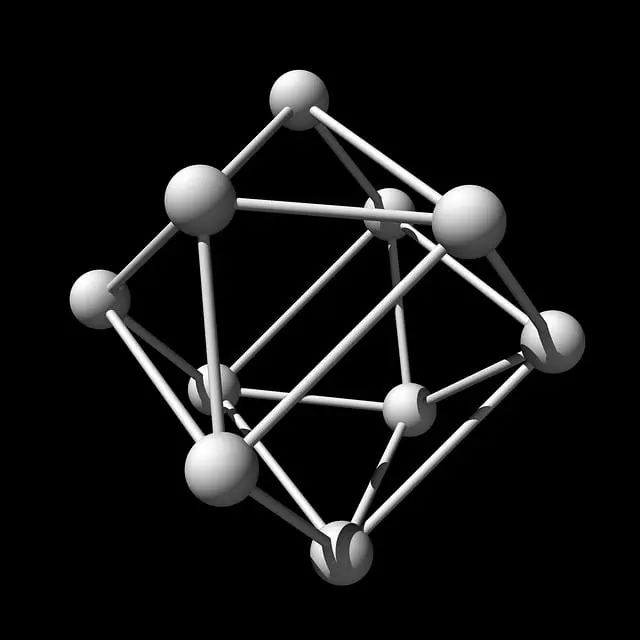Lucky 13 Kratom, a strain from the mitragyna speciosa tree, has gained popularity within the fitness and wellness community for its potential benefits in athletic recovery and performance. It contains alkaloids like mitragynine and 7-hydroxymitragynine, which are linked to pain relief, muscle relaxation, enhanced recovery, and improved mood regulation. These properties make it a potentially valuable tool for athletes seeking to manage post-exercise soreness and maintain mental focus. The Maeng Da strain is particularly noted for its strong analgesic effects, while the Bali strain offers a balance of stimulation and relaxation. Users should approach Lucky 13 Kratom with caution, adhering to safe dosage guidelines, considering individual sensitivities, and consulting healthcare professionals to understand potential risks and interactions with other medications. The legal status of kratom also varies by region, so it's crucial to be informed before use. Incorporating Lucky 13 Kratom into a holistic recovery regimen that includes proper nutrition, hydration, and rest can be a beneficial strategy for athletes looking to optimize their performance and recovery.
Exploring the role of Lucky 13 Kratom in athletic recovery, this article delves into the natural potential of kratom for post-training muscle soreness relief and performance enhancement. By examining its effects on training recovery, optimizing dosage, and highlighting specific Lucky 13 kratom strains, we aim to provide insights that can transform your workout and recovery regimen. Join us as we uncover the benefits of Lucky 13 Kratom in the realm of athletic performance and recovery.
- Unraveling the Effects of Kratom on Training Recovery: Insights into Lucky 13 Kratom
- Optimizing Athletic Performance and Muscle Soreness Relief with Lucky 13 Kratom
- Navigating Kratom Dosage for Post-Workout Recovery with Lucky 13 Kratom Strains
Unraveling the Effects of Kratom on Training Recovery: Insights into Lucky 13 Kratom

In recent times, the discourse surrounding the therapeutic potential of kratom has garnered considerable attention within fitness and wellness circles. Kratom, a plant native to Southeast Asia, has been traditionally used for its stimulant and analgesic properties. Among the plethora of kratom strains available, Lucky 13 Kratom stands out due to its unique alkaloid composition, which may offer distinct benefits for athletes and fitness enthusiasts. The alkaloids present in Lucky 13 Kratom, such as mitragynine and 7-hydroxymitragynine, have been studied for their roles in pain management and muscle relaxation, which are crucial components of post-exercise recovery. These compounds may help reduce soreness and fatigue, potentially improving the quality of rest between training sessions, a critical aspect of any training regimen aimed at performance enhancement or muscular hypertrophy.
Furthermore, proponents of kratom suggest that Lucky 13 Kratom can modulate mood, promoting a balanced mental state conducive to recovery. The strain’s potential mood-elevating effects could aid in maintaining motivation and focus, essential for consistent training progression. Additionally, its analgesic properties might contribute to a faster reduction of inflammation and tissue repair post-exercise, which is vital for optimal athletic performance. However, it is imperative for individuals to exercise caution when incorporating Lucky 13 Kratom into their recovery protocols, adhering to recommended dosages and consulting with healthcare professionals to mitigate potential risks or adverse effects. Users should also be aware of the legal status of kratom in their jurisdiction before use, as regulations vary by region.
Optimizing Athletic Performance and Muscle Soreness Relief with Lucky 13 Kratom

When athletes push their bodies to the limit, recovery becomes a critical component in optimizing performance. Lucky 13 Kratom, a naturally occurring plant alkaloid, has gained attention in the fitness community for its potential role in post-exercise recovery and muscle soreness relief. By interacting with the body’s opioid receptors, Lucky 13 Kratom may help in managing pain associated with intense physical activity, thereby facilitating a more comfortable recovery process. This can be particularly beneficial for those engaged in high-intensity training or endurance sports, where muscle fatigue and soreness are common hindrances to consistent performance improvement.
Moreover, Lucky 13 Kratom is reported to support athletic performance by potentially enhancing energy levels and reducing fatigue. Its stimulating effects may aid in increased stamina and focus during workouts, allowing for longer or more intense training sessions. When incorporating Lucky 13 Kratom into a recovery regimen, it’s important to adhere to dosage guidelines and consider individual sensitivity, as the effects can vary among users. Proper usage of Lucky 13 Kratom, in conjunction with a balanced diet, adequate hydration, and sufficient rest, may contribute to a more efficient recovery process, ultimately optimizing athletic performance and supporting muscle soreness relief. Always consult with a healthcare provider before integrating any new supplement into your training routine to ensure it aligns with your specific health needs and goals.
Navigating Kratom Dosage for Post-Workout Recovery with Lucky 13 Kratom Strains

When incorporating kratom into a post-workout recovery regimen, understanding the right dosage is crucial for optimizing its beneficial effects. Lucky 13 Kratom offers a diverse range of strains, each with its unique alkaloid profile that can aid in muscle recovery and pain management after an intense training session. For instance, the Maeng Da strain from Lucky 13 Kratom is renowned for its potent analgesic properties, which can help soothe sore muscles and promote a sense of well-being. Users often favor this strain for its balanced effects that provide both energy and pain relief, making it ideal for those who need to recover without feeling overly sedated. Another popular choice among Lucky 13 Kratom strains is the Bali, which is known for its relaxing yet stimulating balance, suitable for reducing post-workout fatigue and facilitating a quicker recovery process.
It’s important to tailor the dosage according to individual tolerance and the specific kratom strain chosen. As with any supplement regimen, starting with a lower dose and gradually increasing it under safe conditions is advisable. Lucky 13 Kratom strains vary in their alkaloid content, which can influence their efficacy; therefore, experimentation may be necessary to determine the optimal dosage for your individual needs. For those new to kratom, it’s recommended to consult with a healthcare professional before integrating it into their recovery routine, especially if they are taking other medications or have pre-existing health conditions. With careful consideration and responsible use, kratom from Lucky 13 can be a valuable tool in supporting the body’s natural healing processes following physical exertion.
In conclusion, the discourse on utilizing Lucky 13 Kratom for enhancing training recovery has shed light on its potential benefits for athletes seeking relief from muscle soreness and aiding in post-workout recovery. The exploration into the effects of Kratom, as detailed across the sections on its impact on athletic performance and optimal dosage for recovery, provides valuable insights for those considering this natural option. While integrating Lucky 13 Kratom into a recovery regimen may offer significant advantages, it is pivotal to approach its use with caution and within recommended guidelines. As always, consultation with healthcare professionals is advised before adopting any new supplement into your wellness routine. With careful consideration and responsible use, Lucky 13 Kratom could play a role in the holistic health strategies of many athletes aiming for improved recovery and enhanced performance.






